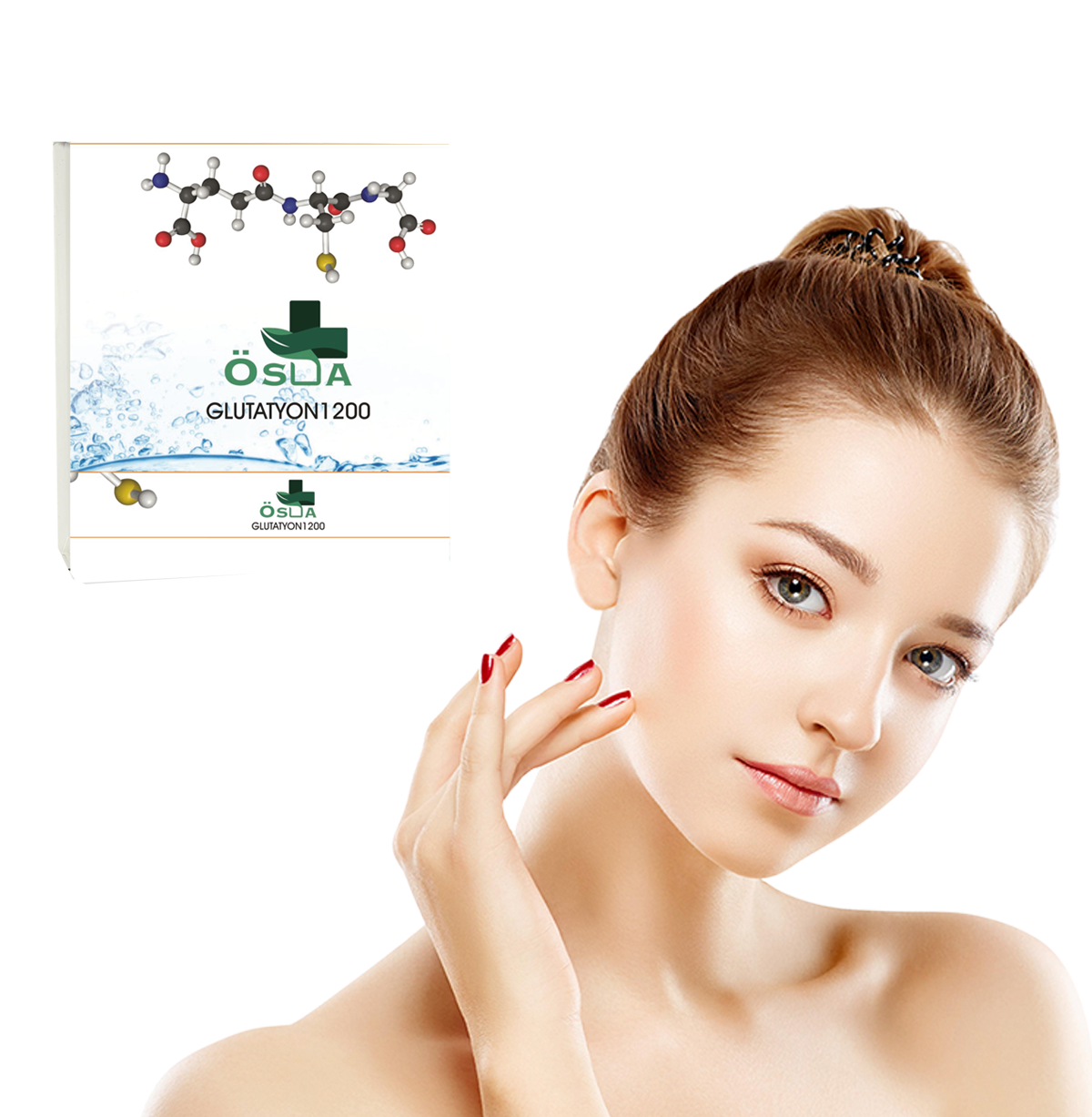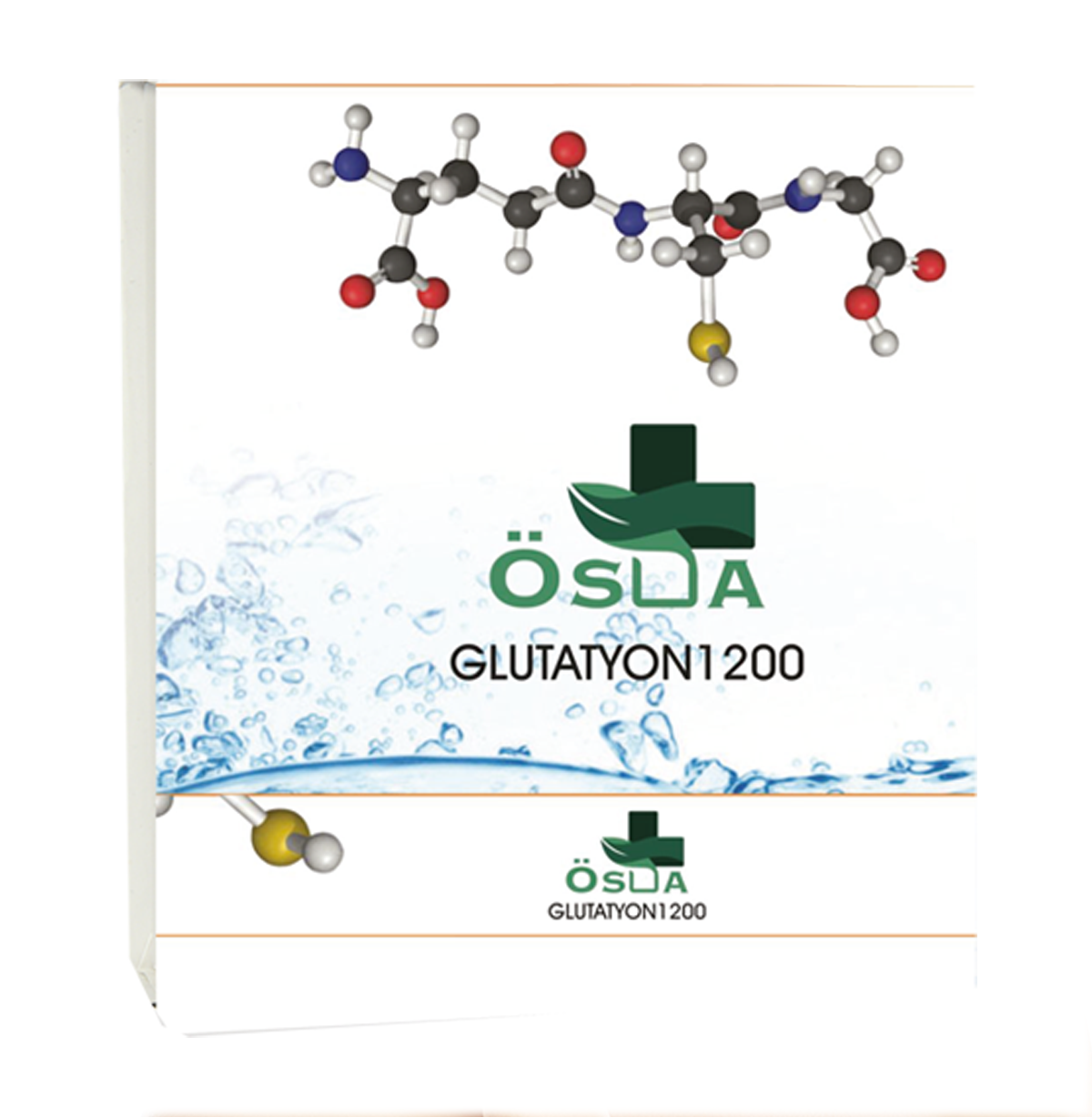Home page-Products-Östa Glutathione-1200
WHAT IS GLUTATHIONE & ITS PURPOSE Glutathione is a substance normally produced by the liver in the body, but is also found in fruits, vegetables and meat. Glutathione is involved in many processes in the body, including tissue building and repair, making needed chemicals and proteins in the body, and the immune system. Cysteine is a tripeptide composed of glycine and glutamate. It exists in two forms: the intracellular reduced form and the oxidized form.
Glutathione is thought to have several causes for its skin lightening effect:
Doctors often give glutathione intravenously (by injection into a vein, by IV) to prevent anemia in kidney patients on hemodialysis, prevent kidney problems after heart bypass surgery, treat Parkinson's disease, improve blood flow, and reduce clotting. It is also used in people with "hardening of the arteries" (atherosclerosis), who are being treated for diabetes, and to prevent the toxic side effects of chemotherapy.
Increases glutathione levels in the body below optimal levels due to aging and environmental stress factors
SOLUTION AND STORAGE CONDITIONS
Glutathione solution should be stored in a cold environment to slow down the rate of oxidative dimerization. It is ideal to store the solution at a temperature below the freezing point, below 15 °C. 5oC may be the ideal storage temperature. The pH of the glutathione solution should be between 5-8. The solution is thawed in a cold environment, at a temperature where freezing will not occur.
Apart from water, glutathione is soluble in diluted alcohol, liquid ammonium and dimethylformamide.
PRESERVATIVE & pH SETTING
Benzyl alcohol 1.5% and 0.9% was used as a preservative. pH adjustment was made with sodium bicarbonate and sodium hydrochloric acid.
SIDE EFFECTS
Glutathione has no known side effects.
Important Note: IV (intravenous) administration is definitely not recommended.
CONTENTS
Aqua, Glutation, Sodium Chloride, Sodium Bezoate, Sodium Bicarbonate
Note: It does not contain paraben.
USAGE
Thanks to the glutathione in its content, it helps to moisturize your skin. Morning and evening, apply 1-2 drops to your fingertips and massage your face in a circular motion.
STORAGE CONDITION
The storage condition is 2 (two) years as of the production date.
WARNINGS
It should be stored at room temperature (22 degrees celcius) or below (15 degrees celcius) International storage (5 degrees celcius)
Keep out of reach of children in its own package. Close the lid tightly. It is for external use. Avoid contact with eyes. In case of contact with eyes, rinse with plenty of water. Do not apply on open wounds and irritated skin. Before use, do an allergy test on a small part of the skin and do not use it in case of an allergic reaction.
INTERACTION
Eusta Glutathione-1200 has no known serious interactions with other drugs.
Licensing: Has Cosmetic Face Serum License.
WHAT IS GLUTATHIONE & ITS PURPOSE
Glutathione is a substance normally produced by the liver in the body, but is also found in fruits, vegetables and meat. Glutathione is involved in many processes in the body, including tissue building and repair, making needed chemicals and proteins in the body, and the immune system. Cysteine is a tripeptide composed of glycine and glutamate. It exists in two forms: the intracellular reduced form and the oxidized form.

